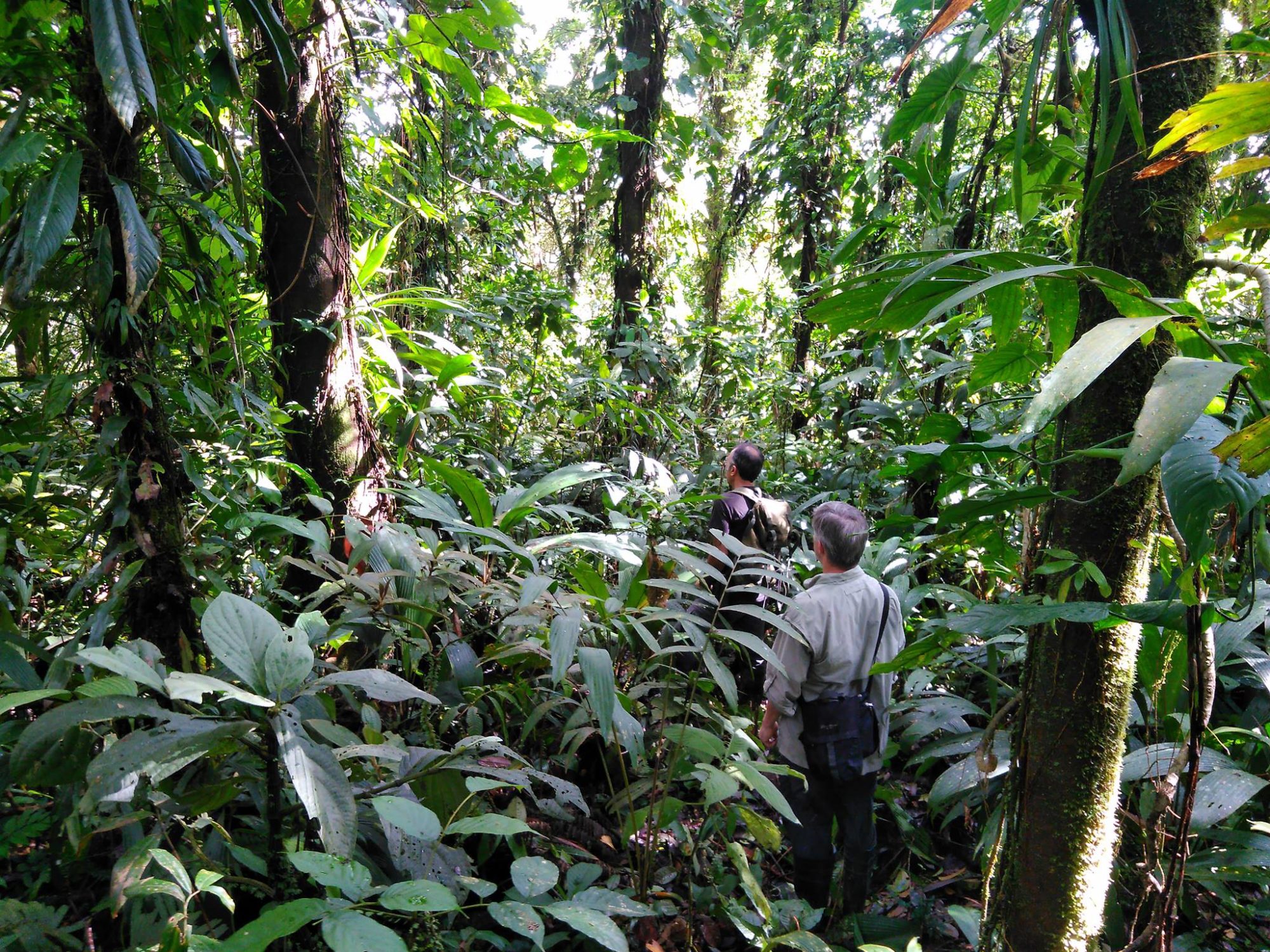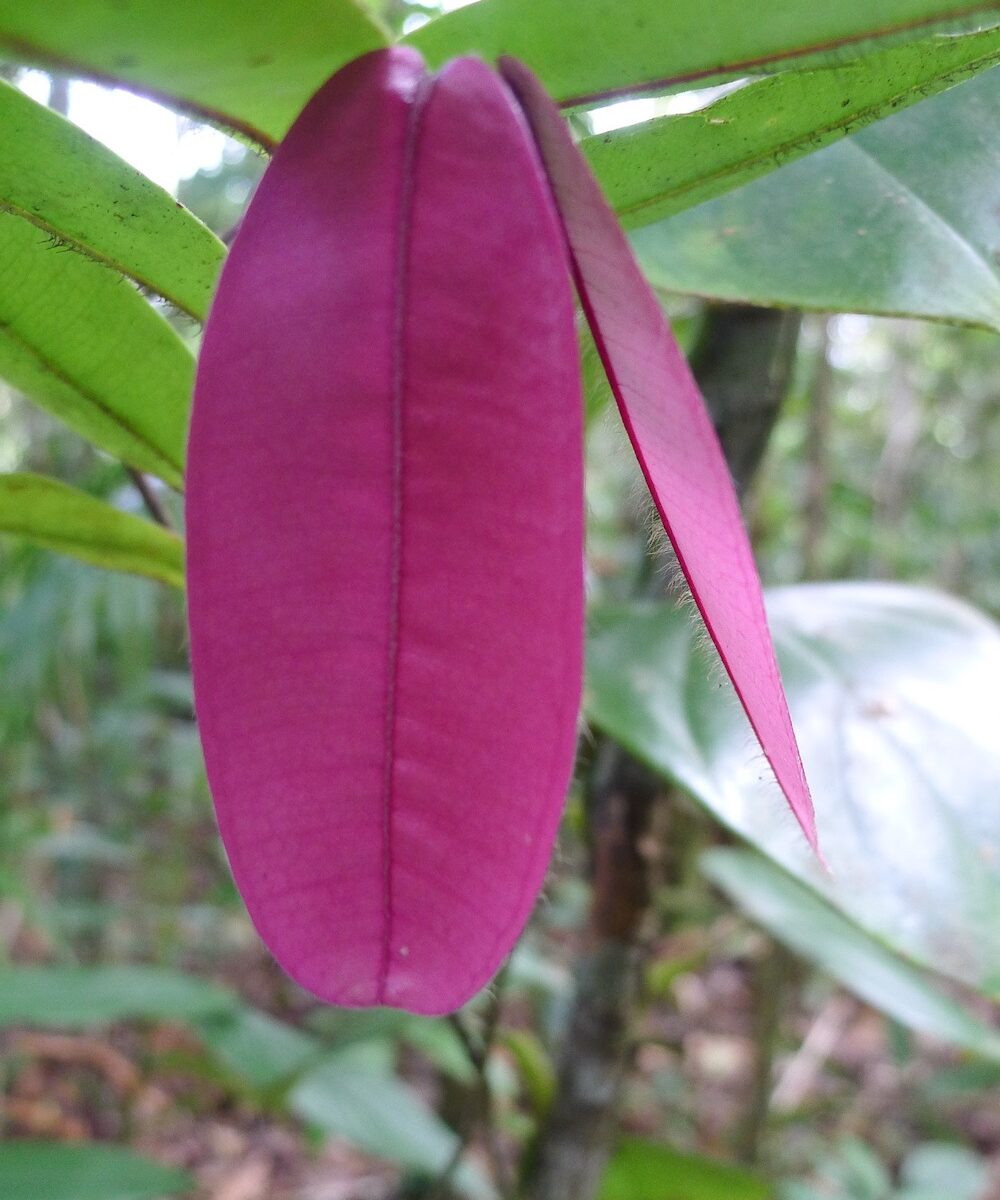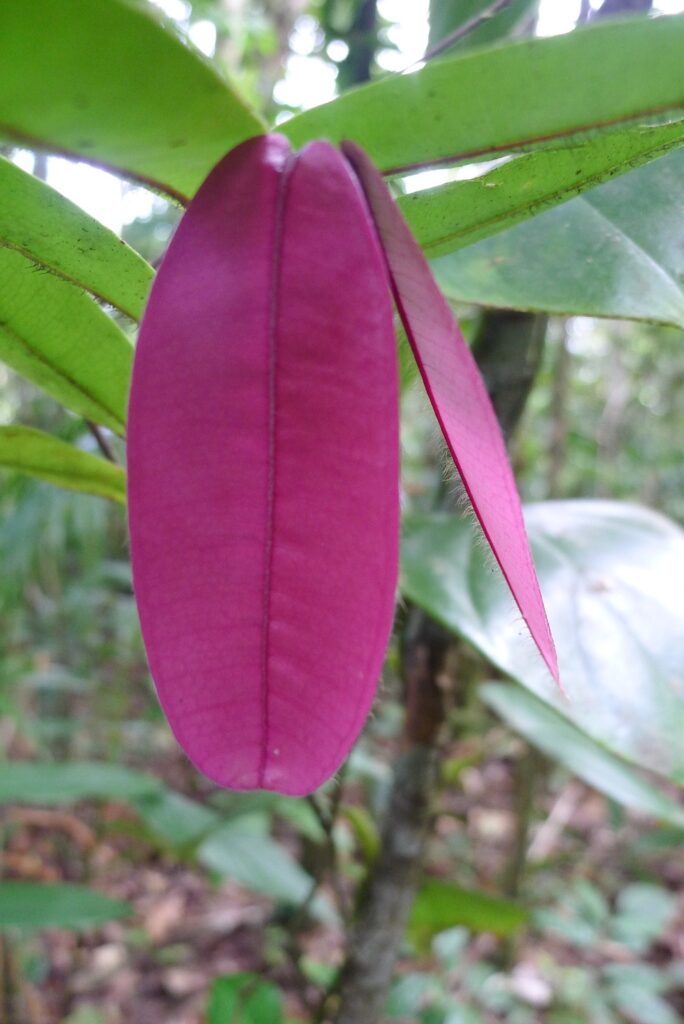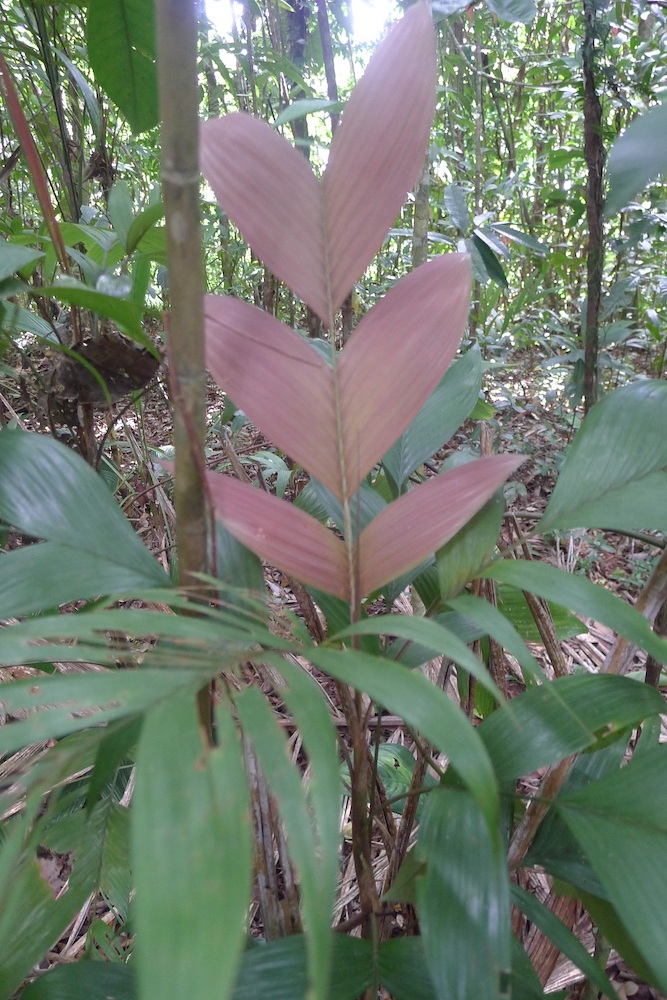Plants in the tropics have evolved in many ways to combat being eaten by herbivores. In the Americas, where mega fauna found across Africa and Asia are absent, it’s the invertebrates that exert the most herbivorous pressure on plants.
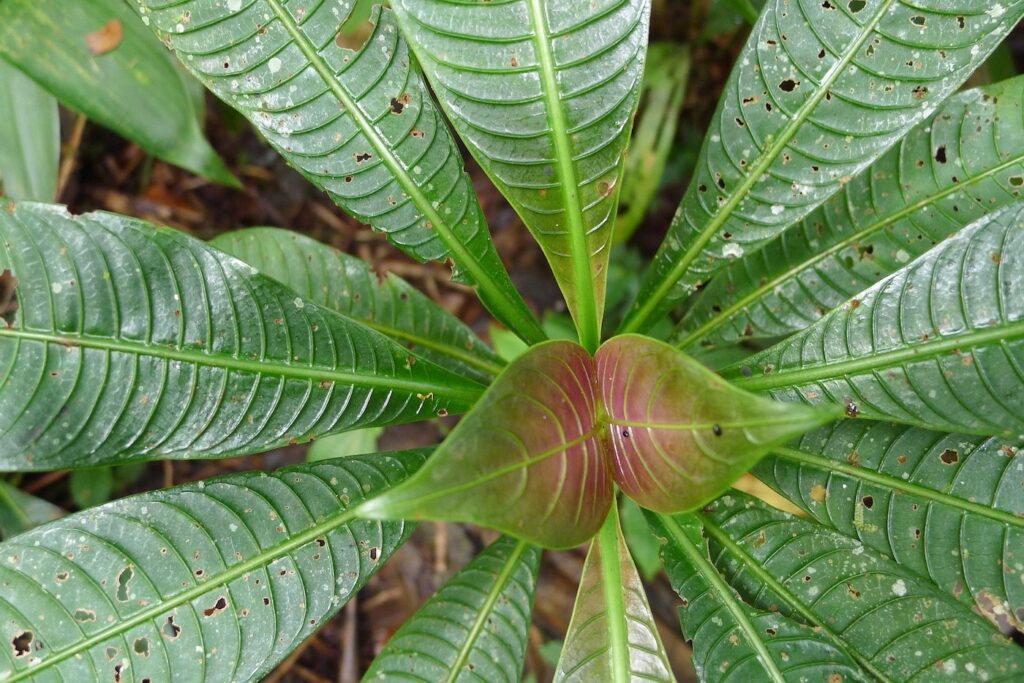
Don’t underestimate their effect, an ant may be degrees smaller than an elephant but their sheer numbers mean they are most certainly as big ecosystem engineers. Leafcutter ant species alone cut an estimated 12 – 17% of all leaf production in tropical forests and can strip a tree in less than a day.
So how do plants cope with this kind of onslaught? In Africa and Asia trees develop hefty, nasty spikes that work really well against large and small mammals alike but these pose no problem to insects. To deter insects a plant has to resort to chemical warfare.
One such example of this chemical solution is very evident across Cocobolo’s many different plant species. If you take a walk in the forest you will notice that a few leaves on certain plants are a purple colour (or sometimes white, cream or red) whilst the rest of their leaves are the usual green. Closer inspection shows that these odd purple leaves are the newest growth on the plant and constitute the immature leaves. The phenomenon, known as delayed greening, is a clever adaptation to herbivory.
As you probably know if you have ever grown veg, fresh young leaves are always more tender than older ones. Herbivores will target new growth for this very reason, eating the soft palatable new growth first before turning to the older leaves. In order to protect new leaves, many plants in the tropics will delay production of chlorophyll. Chlorophyll not only gives a plant its green colour but also enables the absorption of light to provide energy for photosynthesis. Effectively the lack of green pigment renders the purple young leaves invisible to herbivores that are on the lookout for tasty green things.
The life force of the plant, chlorophyll is costly to produce as is a leaf structure itself. So to lose all that effort to herbivores is a real problem for a plant. Better to delay the greening process until the young leaves have had a chance to toughen up and mature; becoming more resilient to browsing insects. Once fully formed it’s worth the plants investment to fill them with chlorophyll so they can pull their weight in the photosynthesis department.
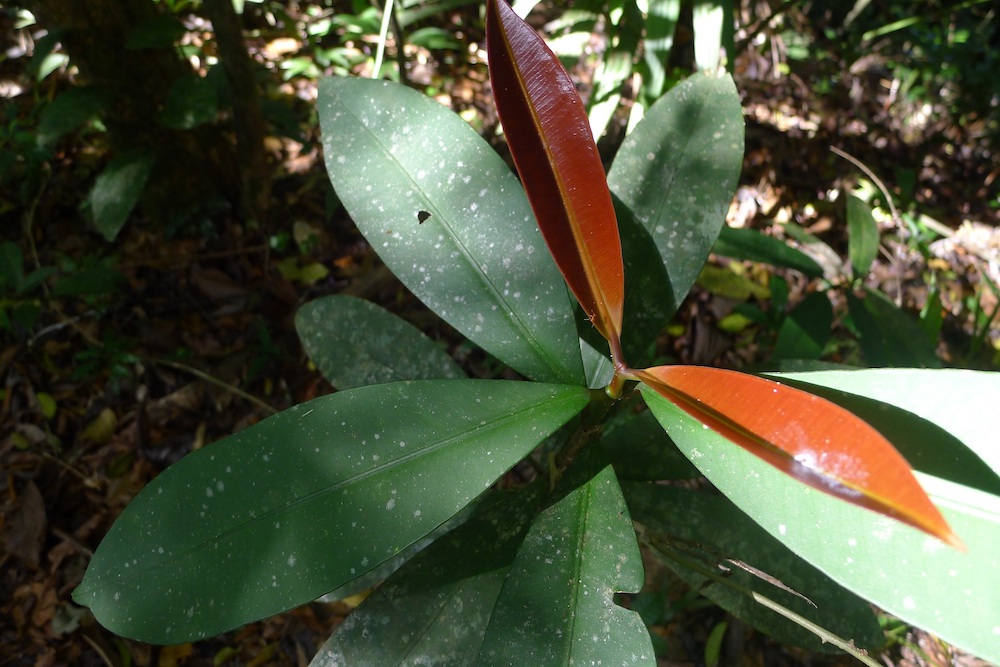
A possible secondary advantage of delayed greening is that many herbivorous insects are green to camouflage themselves from their predators. If they do alight onto a fresh new purple leaf they stand out and are far more vulnerable to passing lizards, frogs and birds making it logical for them to avoid purple leaves.
It is not a perfect system, a leaf with no chlorophyll cannot do the job it was designed for but research has shown that the temporary delay in photosynthetic ability is outweighed by the heavy cost of having to keep re-growing new leaves that are lost to herbivory.
This is a very simple explanation and the evolutionary race between plants and herbivores is complex but it is all the more fascinating for being a phenomenon that is so obvious when you wander around Cocobolo.
